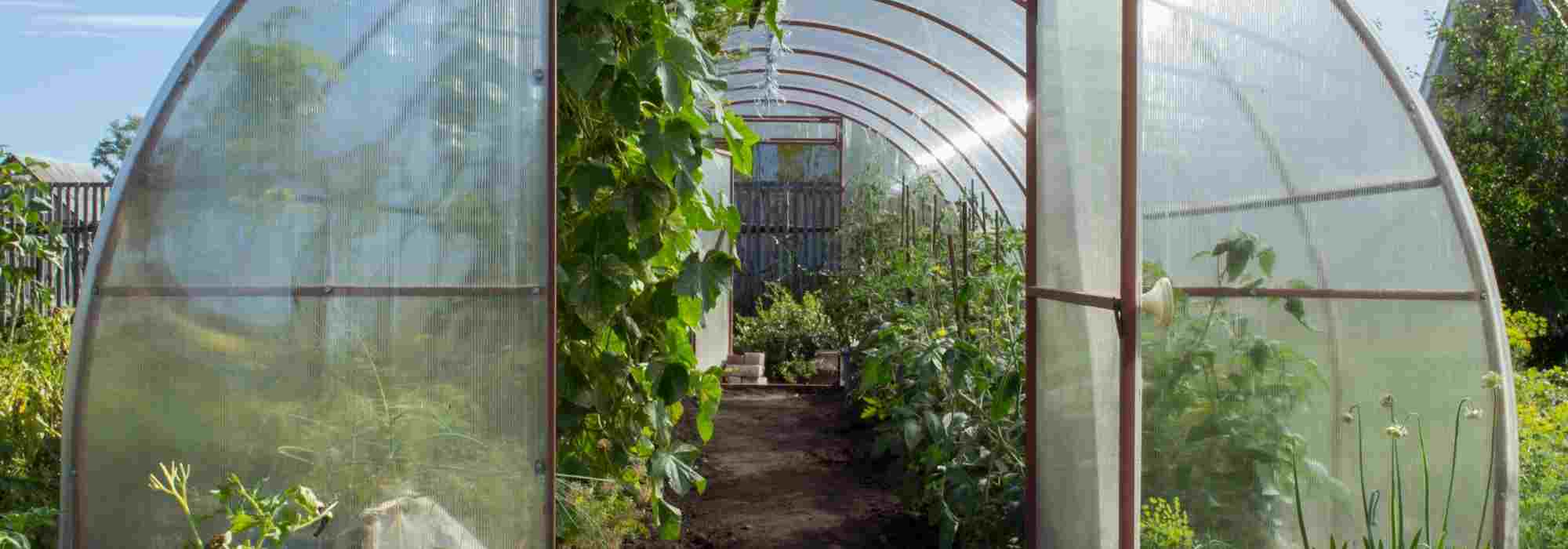
Greenhouse gardening: the most common mistakes
Our tips for optimal greenhouse cultivation management
Contents
For a gardener, a greenhouse is the dream equipment to increase their production of vegetables and small fruits. Indeed, the greenhouse protects crops from bad weather, extends the seasons, and provides a controlled environment for demanding crops. However, growing under glass doesn’t automatically guarantee success. Even the most experienced gardeners can fall into classic traps, through overconfidence or simply through neglect or ignorance. As a confined space, the greenhouse can reveal very nasty surprises and even prove counterproductive.
Let’s explore together the most common mistakes made in a greenhouse, which can seriously compromise your crops, and above all, the expert advice to avoid them.
Not taking into account the greenhouse's microclimate
An open-air vegetable garden may indeed offer somewhat unpredictable growing conditions, but plants have the ability to adapt to natural variations. On the other hand, a greenhouse creates an ideal yet confined microclimate that can quickly become extreme if not properly managed.
The main challenge of a cold greenhouse is precisely… the greenhouse effect! That’s its very principle. It captures and retains the sun’s heat. While this characteristic is highly beneficial during cold or cool periods, in summer, the greenhouse can quickly turn into a veritable furnace. This thermal imbalance can have serious consequences, especially when combined with high humidity.
This is why it seems essential to equip your greenhouse with effective measuring tools, namely a thermometer and hygrometer, or even a connected weather station. These instruments allow you to monitor changes in the microclimate and adjust your practices accordingly. Similarly, in summer when the sun beats down, it may be necessary to install a shading system. There are, for example, shade cloths suitable for polytunnels and plastic greenhouses, or chalk-based paints for glass greenhouses that are naturally washed away by rainfall.
The remaining task is to avoid the common mistakes made by gardeners, which don’t depend on instruments but simply on good sense.
Read also
How to choose a greenhouse?Do not ventilate your greenhouse
One of the most insidious pitfalls in greenhouse cultivation is neglecting ventilation. For an inexperienced gardener, keeping their greenhouse closed seems like a way to retain stored heat. While it’s true that solar warmth is preserved, this mainly creates a stifling atmosphere where air doesn’t circulate. The consequences quickly become apparent: stagnant humidity leads to rotting tomatoes or cucumbers planted inside. Other vegetable plants, less prone to rotting, will suffer from water stress, resulting in slowed growth.
Always remember that a greenhouse is a closed space. Could you yourself live in a completely closed environment? Probably not, as you regularly air out your home…
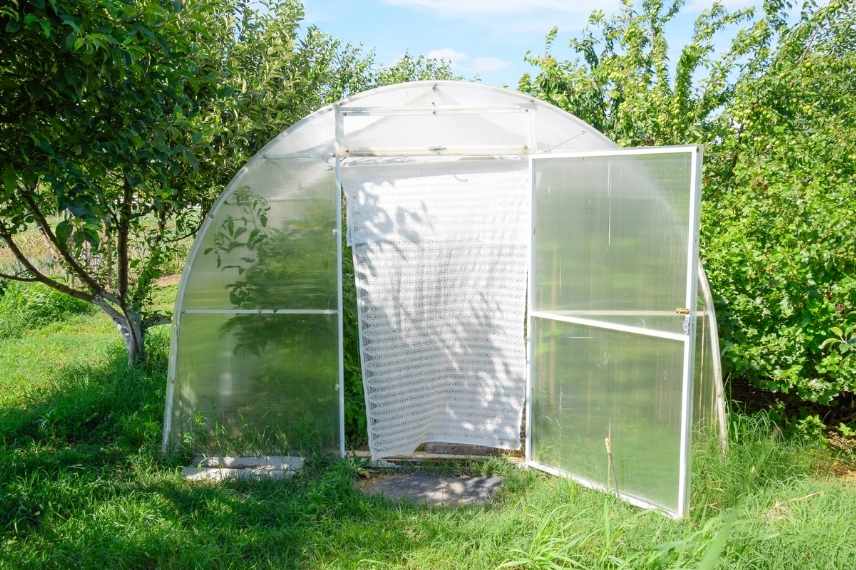
Regular greenhouse ventilation is essential
A greenhouse should therefore be aired and opened daily, both summer and winter, to allow air renewal. This is also a simple way to balance temperature and keep it within an acceptable range for vegetable plants. Depending on the greenhouse model, simply open the door(s) or side windows for a few hours each day (during the warmest periods!) in spring, autumn and winter, and all day in summer.
Not preparing the soil in your greenhouse
In a greenhouse, the soil is often put to the test, as it’s more heavily used than outdoors. Crop rotations aren’t always respected, and the crops are denser and more numerous. As a result, the soil becomes exhausted more quickly, as nutrients are rapidly drawn out by vegetable plants. Sometimes the opposite occurs. An overzealous gardener may over-fertilise their greenhouse soil, causing mineral imbalances or even deficiencies.
This is why in a greenhouse, it’s essential to prepare your soil, just as you would in an outdoor vegetable garden. You should loosen and aerate it with a garden fork or organic fork, then fertilise it by adding an amendment such as well-rotted compost or decomposed manure. This soil preparation work can be done in autumn or spring, depending on how the greenhouse is used.
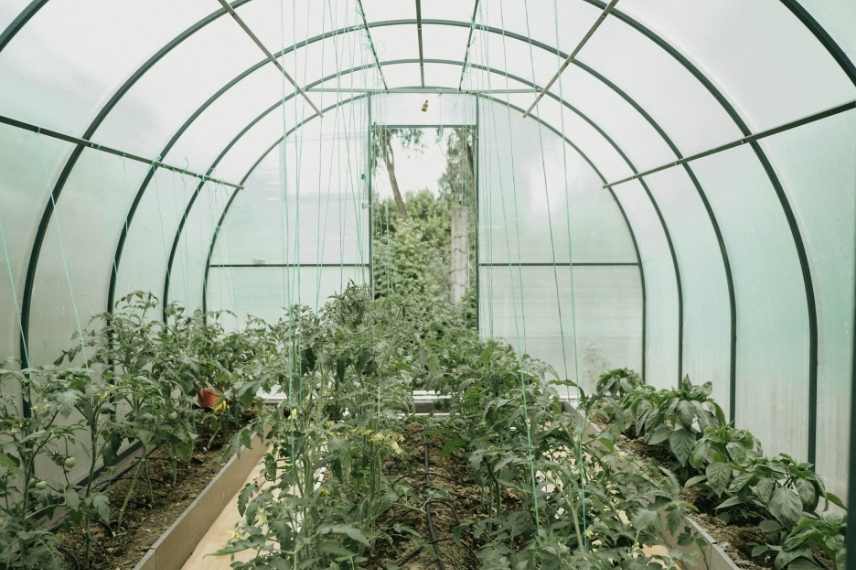
In a greenhouse, the soil becomes exhausted quickly. It’s therefore crucial to work and amend it regularly
In a greenhouse as in a vegetable garden, you can also sow green manure to enrich and structure the soil. Similarly, during cultivation, using nettle tea or comfrey will help boost crops and strengthen their immune defences against diseases. Finally, even though it’s quite difficult in a greenhouse, try to apply at least minimal crop rotation.
Read also
How to manage watering in a greenhouse?Planting too close together in a greenhouse
When a gardener invests in a greenhouse, making the most of it is obvious. And they will often tend to plant a lot, not always taking into account the usual recommended planting distances. However, sowing or planting too densely is a (understandable) mistake that can have unfortunate consequences. Firstly, because they don’t have enough living space, the plants will hinder each other and their growth will be slowed down. The vegetables are likely to be fewer in number and smaller. Moreover, an overly dense crop is prime ground for the development of fungal diseases or the invasion of common pest insects, such as aphids, scale insects, red spider mites… because air circulation is not ensured.
This is why it is essential to reserve enough space for each plant. It’s better to sow or plant fewer, but better. The yield will only be improved.
Sowing too early (or too late)
In a greenhouse, you can extend sowing and planting. That’s a fact, but you still need to consider the specific weather conditions of each region. It’s clear that, thanks to a greenhouse, you can bring forward or extend crops by a few weeks, but imagining growing tomatoes in the middle of winter is completely unrealistic in some areas.
Indeed, the weather has a strong impact on warming the soil or the air, even in a greenhouse. If you sow too early or too late, the seeds may simply not sprout. And if they do germinate, the young plants won’t necessarily have the right conditions to develop optimally.
So, in a greenhouse, common sense prevails. You can bring forward or extend your sowing, but within reasonable limits, and taking weather forecasts into account.
Poor greenhouse watering management
In a greenhouse, watering depends on a delicate balance: not too much, not too little. Sheltered from the rain, plants rely entirely on the gardener for their water supply. But beware, watering as you would outdoors is a common mistake, often with serious consequences. Too much water, and you invite stagnant moisture, fungi, root asphyxiation, and fungal diseases. Too little, and your crops become stressed, produce less, or bolt prematurely.
Since air humidity is naturally higher in a greenhouse, evaporation is reduced, especially if ventilation is insufficient. Yet, the growing medium can dry out quickly on the surface due to accumulated heat. This is why it’s important not to rely solely on what you see but to check soil moisture at depth. Simply inserting a finger into the soil is often enough to avoid misjudgment.
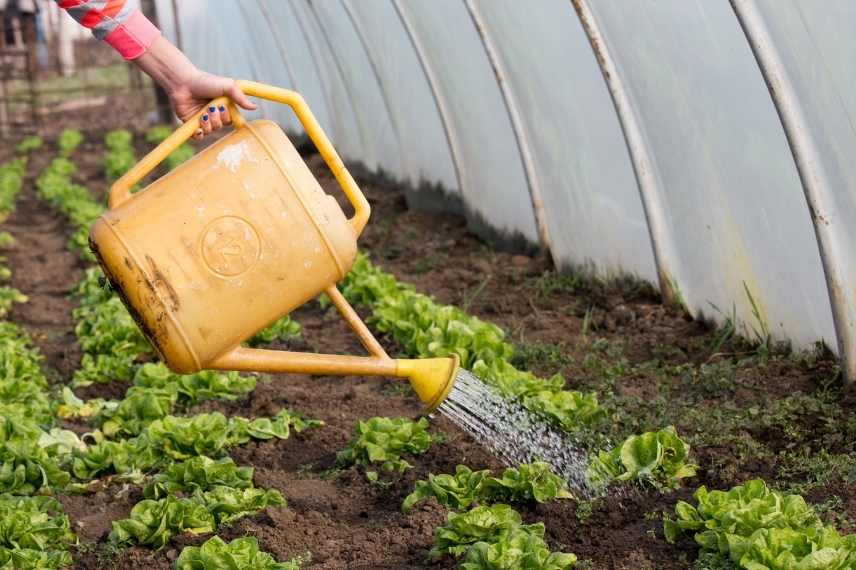
watering depends on a delicate balance: not too much, not too little
This is why manual watering in a greenhouse is preferable, or, at a push, a drip irrigation system, which allows targeted and regular water delivery without excess. Similarly, it’s essential to water in the morning, so plants have time to absorb water before peak heat and moisture doesn’t linger overnight. Lastly, watering must be tailored to the needs of each species of greenhouse-grown vegetable plant. Above all, it must be managed with absolute consistency.
Finally, as in the vegetable garden, mulching is essential in a greenhouse, as it reduces evaporation and limits the need for watering.
Neglecting greenhouse maintenance
One of the common mistakes made by gardeners who own a greenhouse is thinking that, on the pretext that it’s a closed space, it’s protected from diseases, pest invasions, dirt… However, this is far from the case! Allowing the accumulation of crop debris, adventive plants, dead leaves, and old stakes is a serious mistake. Indeed, all this creates an environment conducive to the development of fungal spores and parasitic organisms that will quietly overwinter, waiting for spring to return. The removal of organic waste, which can sometimes carry diseases, is therefore essential and regular to limit risks.
At the end of the season, a thorough deep clean is essential: empty the greenhouse, clean the glass to maximise light, scrub the structures, disinfect tools. Using natural products like white vinegar or black soap is often enough to eliminate unwanted microorganisms without harming the ecosystem. Marion shares some tips for this deep clean: Autumn greenhouse cleaning.
Finally, it’s important to regularly check the condition of the structures: a damaged cover, a cracked pane or a clogged drip system can compromise an entire season.
- Subscribe!
- Contents
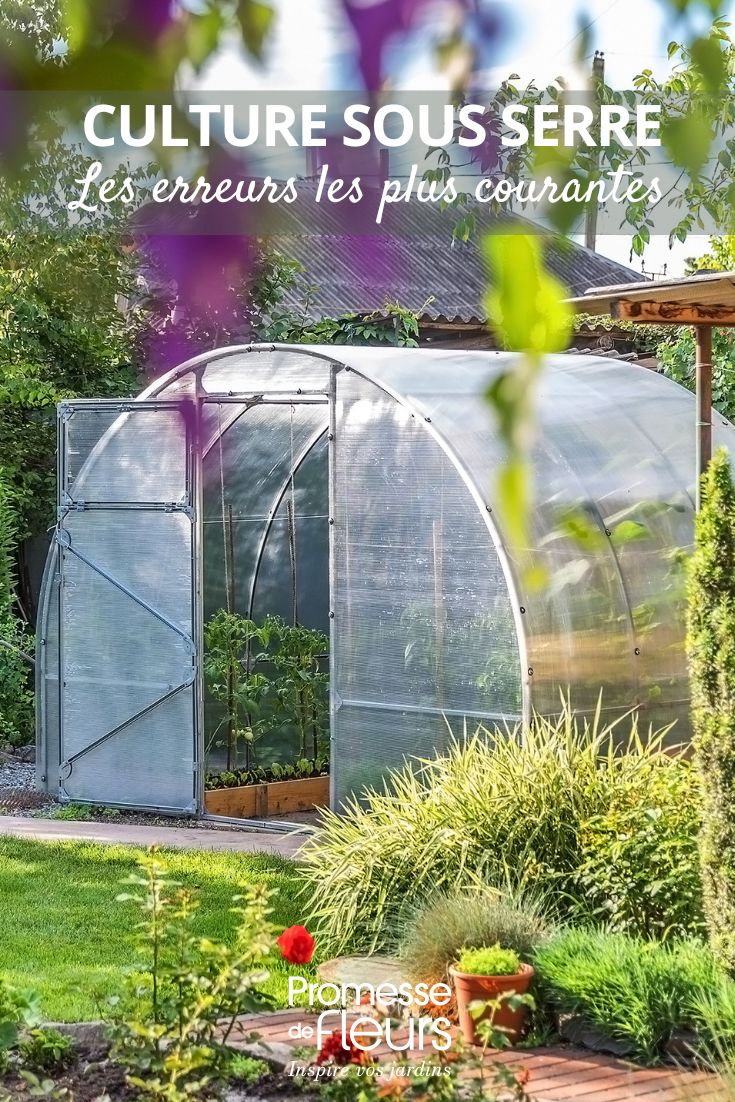































Comments